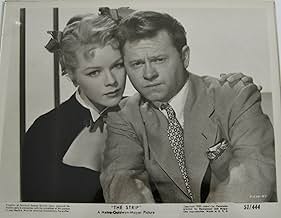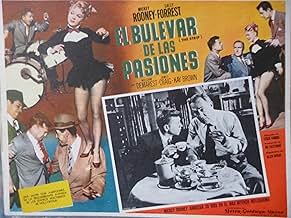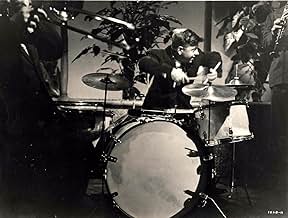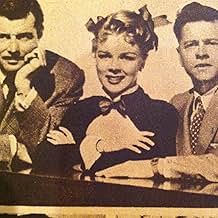Ajouter une intrigue dans votre langueDrummer Stanley Maxton moves to Los Angeles with dreams of opening his own club, but falls in with a gangster and a nightclub dancer and ends up accused of murder.Drummer Stanley Maxton moves to Los Angeles with dreams of opening his own club, but falls in with a gangster and a nightclub dancer and ends up accused of murder.Drummer Stanley Maxton moves to Los Angeles with dreams of opening his own club, but falls in with a gangster and a nightclub dancer and ends up accused of murder.
- Nommé pour 1 Oscar
- 1 nomination au total
Histoire
Le saviez-vous
- AnecdotesOne of several "fringe" musicals in the MGM canon, meaning dramas or comedies that feature one or more musical numbers, but not enough to qualify it as a proper musical. It actually includes a great deal of music, including several drum solos by Mickey Rooney, floor show routines by Sally Forrest, and songs performed by Vic Damone, Monica Lewis, Jack Teagarden, and Louis Armstrong, one of which would grow into a standard, "A Kiss to Build a Dream On". But the musical numbers are all presentational, as opposed to springing from the the plot, so the film is often bypassed by critics and historians in their discussion of the movie musical.
- GaffesThe cop says Jane's apartment's address is 1364 Quinlan. There is no Quinlan street in West Hollywood or anywhere else in Los Angeles County. However, this is not a goof as the movie is a work of fiction, and it is common to use fictitious locations in stories and movies.
- Citations
Narrator: Los Angeles, 5 AM. In another few hours, most of the 4 million people in the county will be going to work. Those are the Hollywood Hills and that's The Strip. It's just a piece of land that runs a mile and a half through Hollywood. The Sheriff's office watches over it.
- ConnexionsFeatured in Los Angeles Plays Itself (2003)
- Bandes originalesA Kiss to Build a Dream On
by Bert Kalmar, Harry Ruby, Oscar Hammerstein II
Performed by Louis Armstrong (uncredited)
Told in flashback, the movie starts with the discovery of Forrest barely alive on her apartment floor, and during the investigation, the discovery of Craig's body and a gun. Rooney is brought in for interrogation, and he tells his side of the story in flashback. It all sounds like pure noir, until you see the movie, which is also in many ways a musical. Artists and musicians like Louis Armstrong, Vic Damone and Jack Teagarden are given plenty of time to play their music and sing their songs, as a large part of the movie plays out in nightclubs. In fact, one of the songs (sung by hatcheck girl Kay Brown) got the movie an Oscar nomination. Thankfully, unlike some noirs where musical interludes slow down the story, it works rather well here. And seeing Rooney and Forrest showing off their drumming and dancing skills respectively was way more fun than I expected, impressive stuff.
But a noir it still is, trust me. People use people and through the flashback structure, there is always tension under the surface as (part of) the outcome is already known to the viewer. And it has a bleak, downbeat, even ironic, ending that firmly establishes this as a noir. Performances are great across the board, helped by the well- written characters and dialogue. The main negative is that the directing by Laszlo Kardos ('The Tijuana Story') and cinematography by Robert Surtees ('Act Of Violence') is good but not very noir or imaginative. Still, that's only a minor quibble, this movie impressed me with its successful blending of noir and musical, the performances and the story. Recommended! 8/10
Meilleurs choix
Détails
- Date de sortie
- Pays d’origine
- Langue
- Aussi connu sous le nom de
- Tödliches Pflaster Sunset Strip
- Lieux de tournage
- Mocambo - 8588 Sunset Boulevard, West Hollywood, Californie, États-Unis(Vic Damone's performance)
- Société de production
- Voir plus de crédits d'entreprise sur IMDbPro
Box-office
- Budget
- 885 000 $US (estimé)
- Durée1 heure 25 minutes
- Couleur
- Rapport de forme
- 1.37 : 1
Contribuer à cette page





































